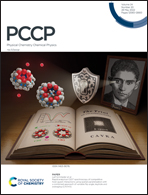N-doped engineering of a high-voltage LiNi0.5Mn1.5O4 cathode with superior cycling capability for wide temperature lithium–ion batteries†
Abstract
Spinel LiNi0.5Mn1.5O4 (LNMO) is one potential cathode candidate for next-generation high energy-density lithium–ion batteries (LIBs). However, serious capacity decay from its poor structural stability, especially at high operating temperatures, shadows its application prospects. In this work, N-doped LNMO (LNMON) was synthesized by a facile co-precipitation method and multistep calcination, exhibiting a unique yolk–shell architecture. Concurrently, N dopants are introduced into a LNMO lattice, endowing LNMON with a more stable structure via stronger Ni–N/Mn–N bindings. Benefiting from the synergistic effect of the yolk–shell structure and N-doped engineering, the obtained LNMON cathode exhibits an impressive rate and the state-of-the-art cycling capability, delivering a high capacity of 103 mA h g−1 at 25 °C after 8000 cycles. Even at a high operating temperature of 60 °C, the capacity retention remains at 92% after 1000 cycles. The discovery of N dopants in improving the cycling capability of LNMO in our case offers a prospective approach to enable 5 V LNMO cathode materials with excellent cycling capability.

- This article is part of the themed collection: 2022 PCCP HOT Articles


 Please wait while we load your content...
Please wait while we load your content...